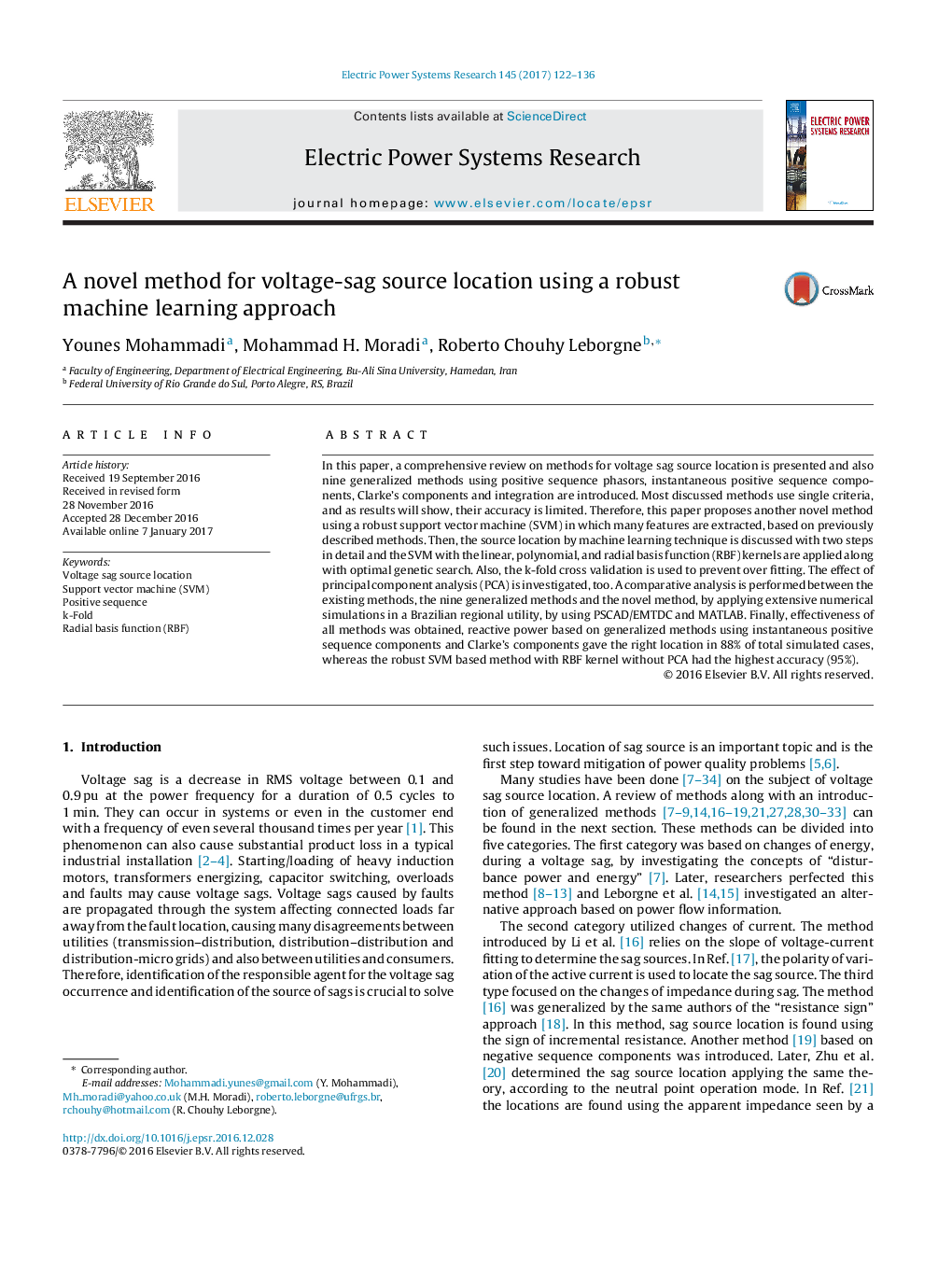| Article ID | Journal | Published Year | Pages | File Type |
|---|---|---|---|---|
| 5001300 | Electric Power Systems Research | 2017 | 15 Pages |
â¢All methods for voltage sag source detection are reviewed and comprised.â¢Nine generalized methods are presented.â¢A novel method based on a robust SVM is proposed.â¢The effectiveness of all methods is discussed on a Brazilian regional power network.â¢The simulation results determine mthods with more accuracy.
In this paper, a comprehensive review on methods for voltage sag source location is presented and also nine generalized methods using positive sequence phasors, instantaneous positive sequence components, Clarke's components and integration are introduced. Most discussed methods use single criteria, and as results will show, their accuracy is limited. Therefore, this paper proposes another novel method using a robust support vector machine (SVM) in which many features are extracted, based on previously described methods. Then, the source location by machine learning technique is discussed with two steps in detail and the SVM with the linear, polynomial, and radial basis function (RBF) kernels are applied along with optimal genetic search. Also, the k-fold cross validation is used to prevent over fitting. The effect of principal component analysis (PCA) is investigated, too. A comparative analysis is performed between the existing methods, the nine generalized methods and the novel method, by applying extensive numerical simulations in a Brazilian regional utility, by using PSCAD/EMTDC and MATLAB. Finally, effectiveness of all methods was obtained, reactive power based on generalized methods using instantaneous positive sequence components and Clarke's components gave the right location in 88% of total simulated cases, whereas the robust SVM based method with RBF kernel without PCA had the highest accuracy (95%).
